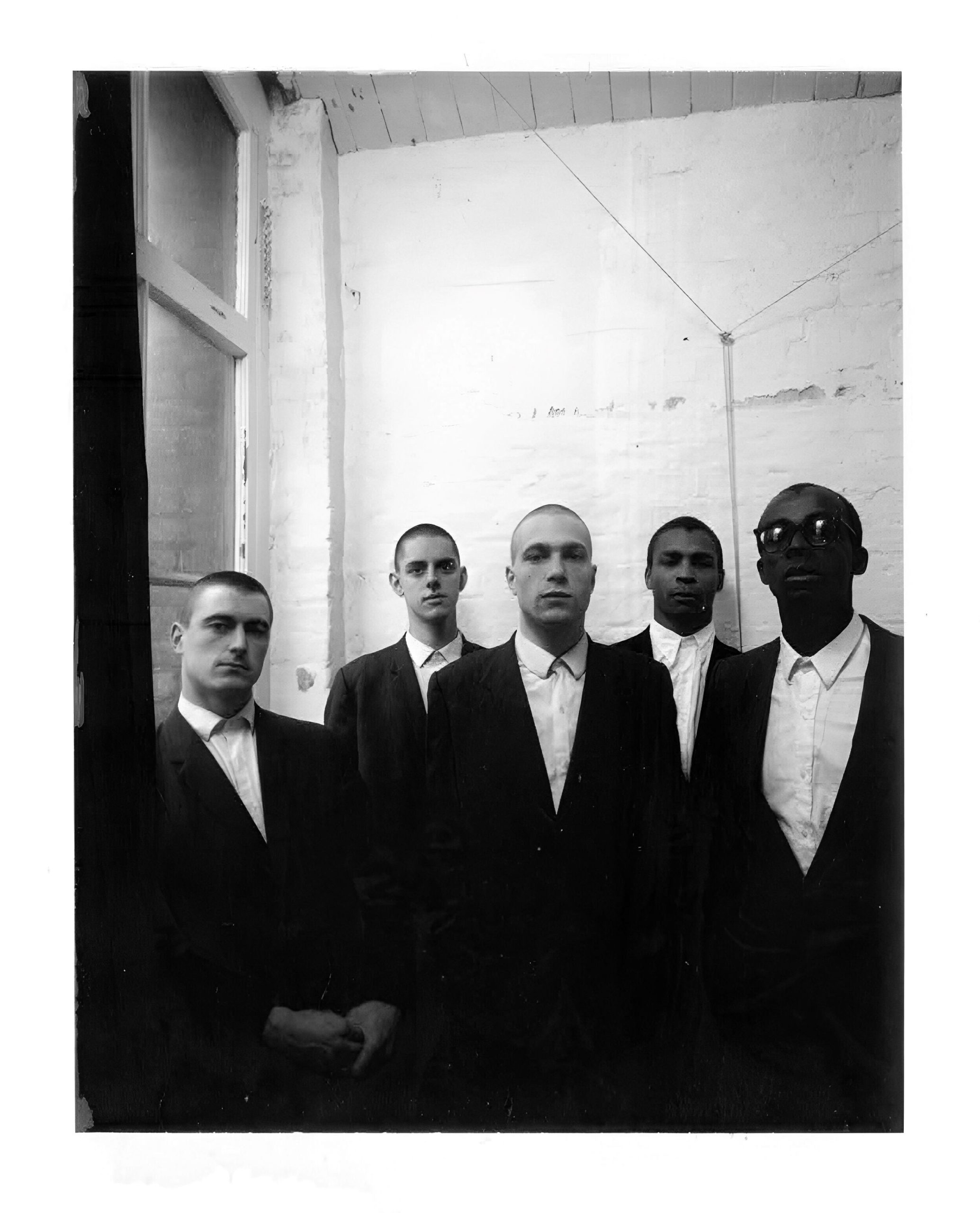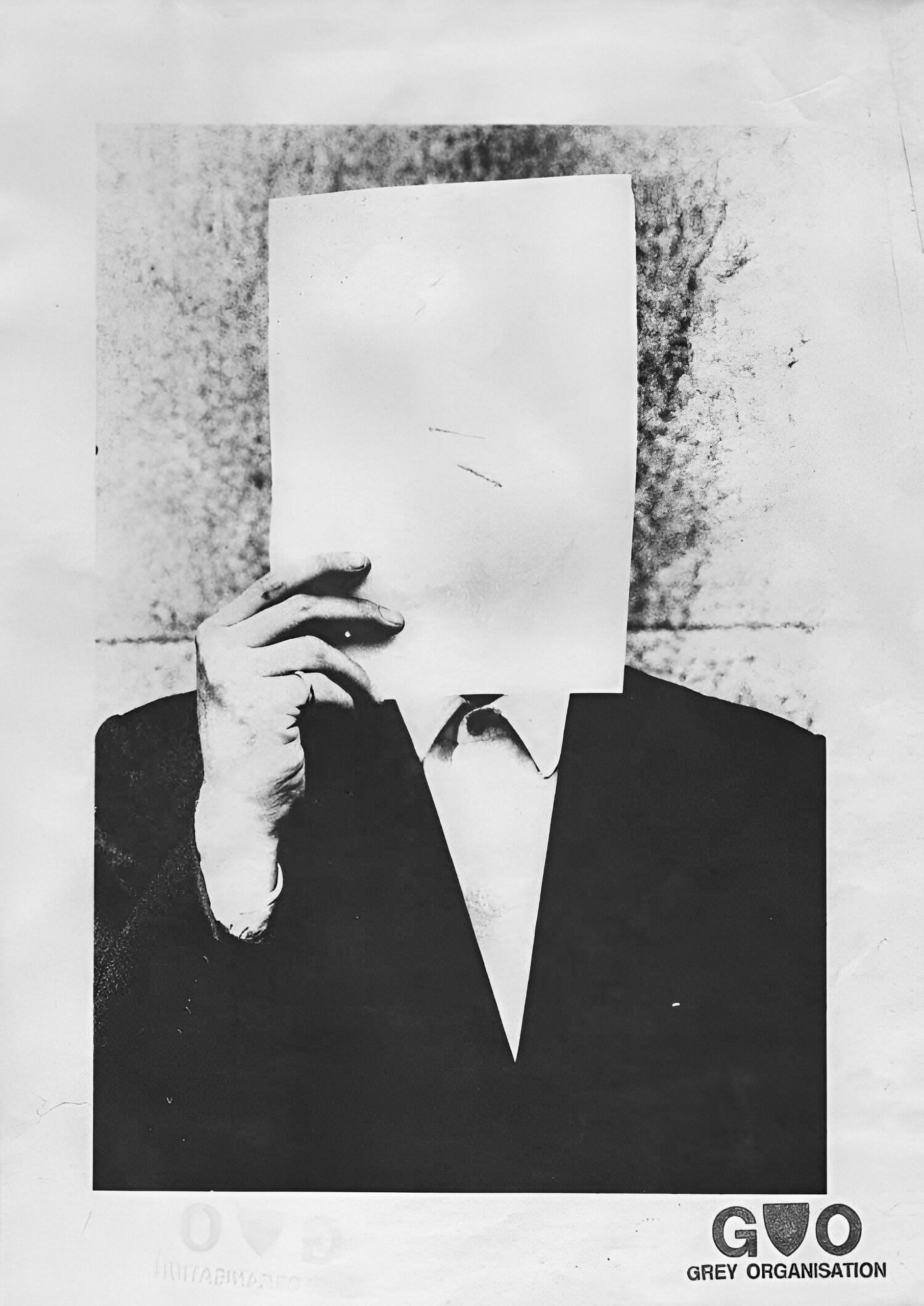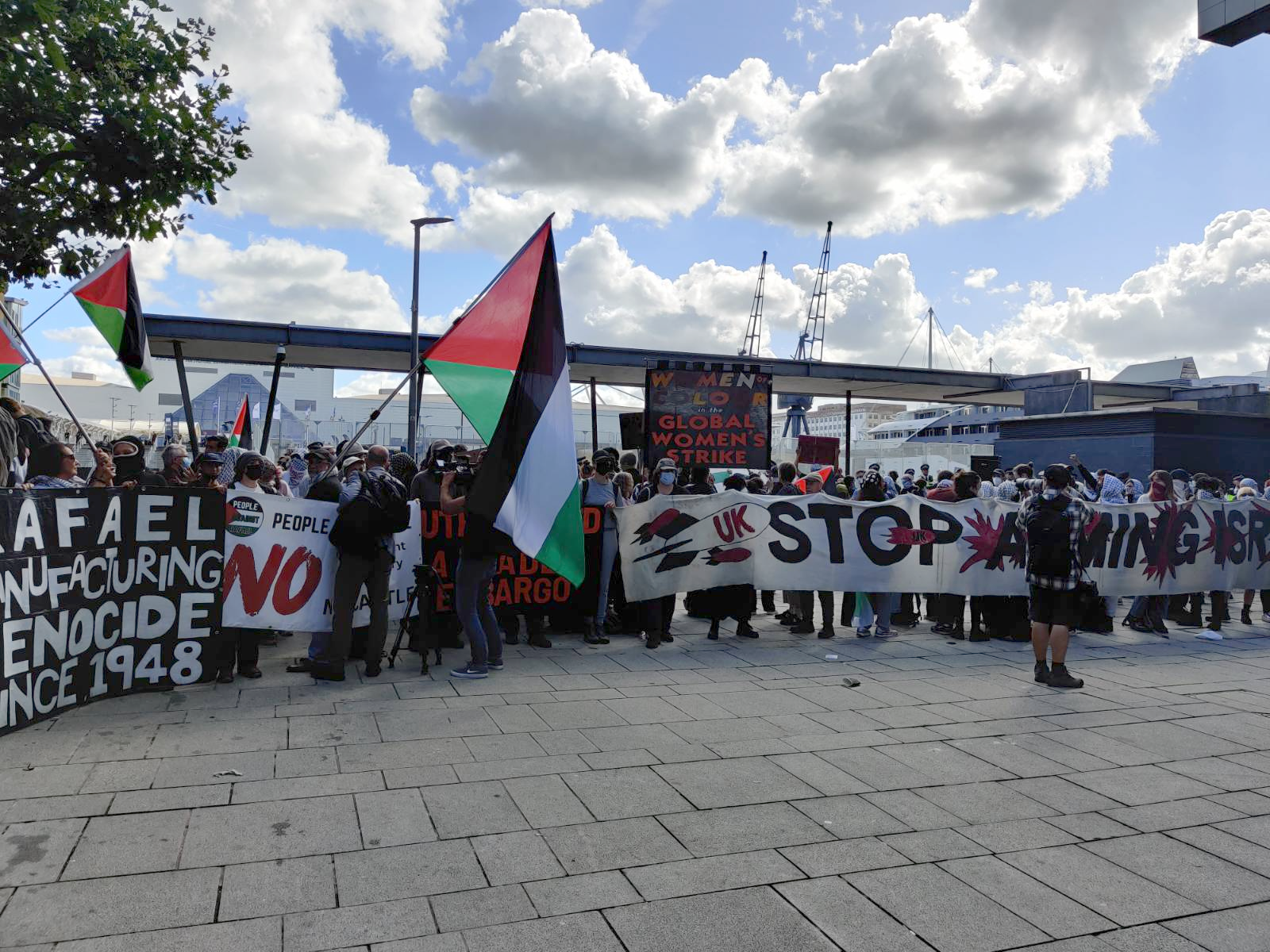The Grey Organisation’s escapades in Thatcherite Britain let the radical underground bleed over into the art world —
Self-proclaimed ‘art terrorists’, The Grey Organisation (GO) was a British art collective founded in 1983. The group emerged from the anarcho-punk scene of East London and Soho. Precursory to the arrival of big money into the art world, the GO embraced anonymity and rejected the hero-artist identity. Mixing corporate yuppie culture and Soviet monoculture, it embodied a reflection of the status quo of the Cold War era and Thatcher’s Britain.
Comprised of the painter Toby Mott (its co-founder and spokesperson), Daniel Saccoccio (nee Clegg), Paul Spencer, and the late Tim Burke, the GO became notorious for staging an attack on a number of Mayfair galleries on Cork Street, then the epicentre of the London art world. Armed with buckets of grey paint, they splattered the galleries’ windows in protest at their lack of support for emerging artists, resulting in a banning order from central London which eventually forced the collective to relocate to New York. Other GO interventions included gatecrashing the International Contemporary Art Fair at Olympia, and participating in The Money Show curated by J.S.G Boggs with their works ultimately being confiscated by Scotland Yard’s Counterfeiting Squad.
Working as a collective, the GO also produced work with De La Soul, Derek Jarman, Gilbert & George, Neue Slowenische Kunst, Mutoid Waste, Psychic TV, Survival Research Laboratories, Yohji Yamamoto, and – controversially – with the Labour Party and Swatch.

The Grey Organisation’s extensive archive, including original artworks, rare documentation and exclusive footage capturing the group’s actions from its inception to its dissolution, is now part of the A/POLITICAL collection. Its director, Becky Haghpanah-Shirwan, recently spoke to Toby Mott about the group’s escapades and the controversies it created, in the bleed-over between the radical underground and the art world.
At school, quite early on, you formed the Anarchist Street Army.
The Anarchist Street Army was the precursor to the Grey Organisation and was formed with myself and friends who at this time in the late 1970s, early 80s were attending gigs by Crass, Poison Girls etc and were at the start of the burgeoning Anarcho punk scene, although we didn’t hang around it for long. We created the ASA with a distinctive logo which we painted on the back of our black leather jackets and saw ourselves as some kind of militant anti-fascist opposition to the Thaterchirite regime that was gaining ground.
And apart from the logo and the clothes, how did you immerse yourself in the anti-fascist movement?
Like a lot of kids in the punk scene at the time 1977 and onwards we were anti-fascist and participated in various marches, often at the back where the anarchists would be. We attended all the London Rock Against Racism carnivals etc. This political interest led us to visiting the Freedom bookshop in the alley to the side of the Whitechapel Gallery which had copies of Black Flag that I would read.
Can you explain more about the cultural setting and your contemporaries in the art scene at the time when The Grey Organisation began in the early 1980’s?
The Grey Organisation was subsequently formed to make art in the environment of Thatcher’s Britain. At that time in early 1980s London there were the remnants of the Hippy alternative movement, who had created housing cooperatives. The Grey Organisation moved into cooperative housing, so our interest in community action was further endorsed by our communal living situation, and working and socialising with other art collectives who all were in opposition to the government of the day. I would say that unlike now we were all of the same mindset from the studios we worked in to the pubs and clubs we frequented.

We lived in one in Bow, East London. In Hackney there were music collectives like the Bow Gamelan Ensemble and Throbbing Gristle which had mutated into Psychic Tv. Test Department were south of the river, and the artist duo Gilbert and George were all creating work collectively.
I’m not sure why that period of time created that form of community action aesthetic, but it seems we were also very much part of it. At the time it did not seem unnatural to group together to create. London back then was filled with factions – either political groups, SWP, WRP, NF, British Movement or subcultures, punks, skinheads, new romantics – so banding together with common cause seemed a natural course of action.
You chose to style yourself on the Soviet poet and playwright Mayakovsky. Can you explain the reason for appropriating this Bolshevik aesthetic?
Our style was a mixture of British establishment gentlemen, the emerging Capitalist yuppie look and Soviet monoculture. We were interested in Constructivism and Soviet art as it was also made by groups with a purpose and of course iconic images of Mayakovsky were on our radar. The uncompromising aesthetic appealed to us along with disenfranchised Americans, images from the great depression who often did not wear ties, which we saw as symbols of the establishment, so we eschewed those.
What we adopted was the skinhead haircut with the grey business Politburo suit and the plain white cotton shirt buttoned up at the top. It wasn’t specifically inspired by Mayakovsky but he was certainly one of our influences.

While anti-establishment in your influence and approach to the art-world, you collaborated with high-profile celebrities and musicians when other artistic contemporaries actively worked against this system. You became a brand, with your own logo etc. Can you explain this seemingly complex entanglement with commercialism?
As we became more well-known, we were approached notably by Lynne Franks [the template PR guru inspiration for seminal TV show Absolutely Fabulous]. She represented Body Map, Katharine Hamnett and other kinds of outsiders who were, on the whole, opposing the government of the day. It did not seem like we were doing ‘collabs’ like you see today, but we did work with Swatch Watch and the Labour Party. It was really opportunities that presented themselves along the way, there didn’t seem to be an overall plan. We were very much living in the moment. As Gilbert and George called us, ‘Existers’.
We were also living in a depressed economy even though it was booming in the financial centre, The City of London, and we saw in America the likes of Keith Haring and the East Village art scene as appealing and wanted to engage with that and to also have some kind of prosperity for ourselves because we realised without money we couldn’t really do much.
So you left London for the bright lights of New York…
The New York City of 1985 was something like the movie, The Warriors. Civilian Warfare Gallery, who we worked with, was situated in the lower east side of the East Village. It was an emerging neighbourhood and not exactly safe. This led to an ambience of living on the edge in the desolate urban landscape. Half the buildings were derelict and covered in graffiti, but none of this seemed to matter and it was not so different in ambiance to East London, where we had come from.
The nightlife went on much later than London and was a big part of the scene. That was where many connections were made. Civilian Warfare was showing emerging artists, and like its name suggests, it was uncompromising and at the vanguard of the East Village art scene and the perfect platform for The Grey Organisation.

With all of the commercial success and high-profile collaborations, what brought about the demise of The Grey Organisation? In hindsight, do you think the group achieved all it set out to do?
Over the whole course of our activity, there were many highs and lows. We never viewed the Grey Organisation as building a company for profit; any profit we made went back into creating art. The collaborations, which are now seen as successful and important, at the time these were just part of our activities, so I would say overall it was more of a rollercoaster ride than reaching a pinnacle of success.
By the end of our activities, there were just two of us: myself and Paul Spencer. When Paul decided to return to London from New York for his own reasons, he set up a store on Portobello Road called Wong Sing Jones, a trading company with artifacts he found on his global travels.
I continued working as an artist and Art Director and moved to Los Angeles, but I eventually returned to London. I would say the Grey Organisation achieved a fair bit without any goal to do so. We were more disruptors, living very much in the moment, with creativity as our form of action and rebellion.








